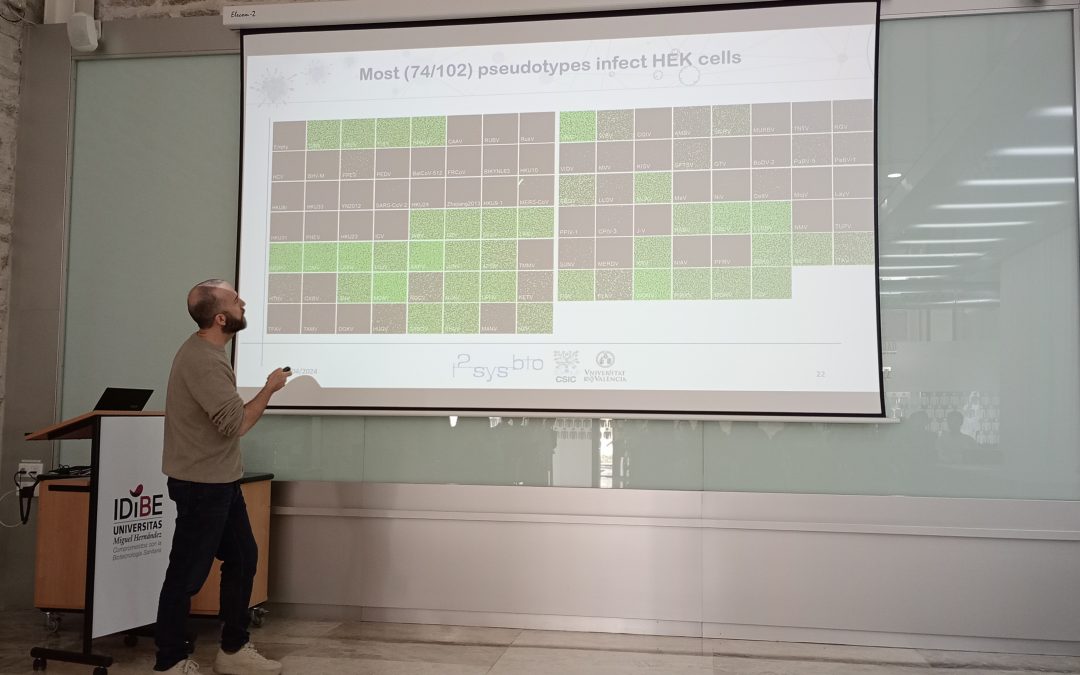Last Friday we had the honour of having Dr. Rafael Sanjuán (ORCID:0000-0002-1844-545X) give a seminar at our facilities entitled: How do zoonotic viruses enter our cells?
Dr Sanjuán (Valencia, 1977) is known for his research on viral mutation rates, virus transmission, virus-virus interactions and emerging viral diseases. His work has also focused on topics such as therapeutic viruses, epidemiological surveillance and antivirals. He has published more than 100 articles, including in journals such as Science and Nature Microbiology, and has been principal investigator of multiple European Research Council (ERC) projects.
In Friday’s seminar he explained that zoonotic viruses are transmitted from animals to humans and have caused major human diseases such as influenza, COVID, AIDS and many others. He said that understanding and, if possible, predicting viral zoonoses should be a priority goal, but also a difficult challenge, as it is a complex process involving ecological, social, virological and evolutionary factors. In the seminar, he discussed how to study potentially zoonotic viruses in a safe way, through specific aspects of infection.
He used pseudoviruses as an example to investigate viral entry into cells and showed that most RNA viruses possess receptor binding proteins capable of mediating entry into human cells. Dr. Sanjuán asked whether it is possible to make predictions at this level and what are the molecular mechanisms that determine the entry of zoonotic viruses.
IDiBE would like to thank him for coming and for sharing his knowledge on such a relevant subject.

